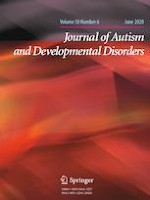09-03-2019 | Original Paper
Outcomes of a Robot-Assisted Social-Emotional Understanding Intervention for Young Children with Autism Spectrum Disorders
Gepubliceerd in: Journal of Autism and Developmental Disorders | Uitgave 6/2020
Log in om toegang te krijgenAbstract
This study is a randomized control trial aimed at testing the role of a human-assisted social robot as an intervention mediator in a socio-emotional understanding protocol for children with autism spectrum disorders (ASD). Fourteen children (4–8 years old) were randomly assigned to 10 sessions of a cognitive behavioural therapy (CBT) intervention implemented in a group setting either with or without the assistance of a social robot. The CBT protocol was based on Rational Emotive Behaviour Therapy (REBT) principles. Pre- and post-intervention assessments were conducted using the Test of Emotional Comprehension (TEC) and the Emotional Lexicon Test (ELT). Substantial improvements in contextualized emotion recognition, comprehension and emotional perspective-taking through the use of human-assisted social robots were attained.
